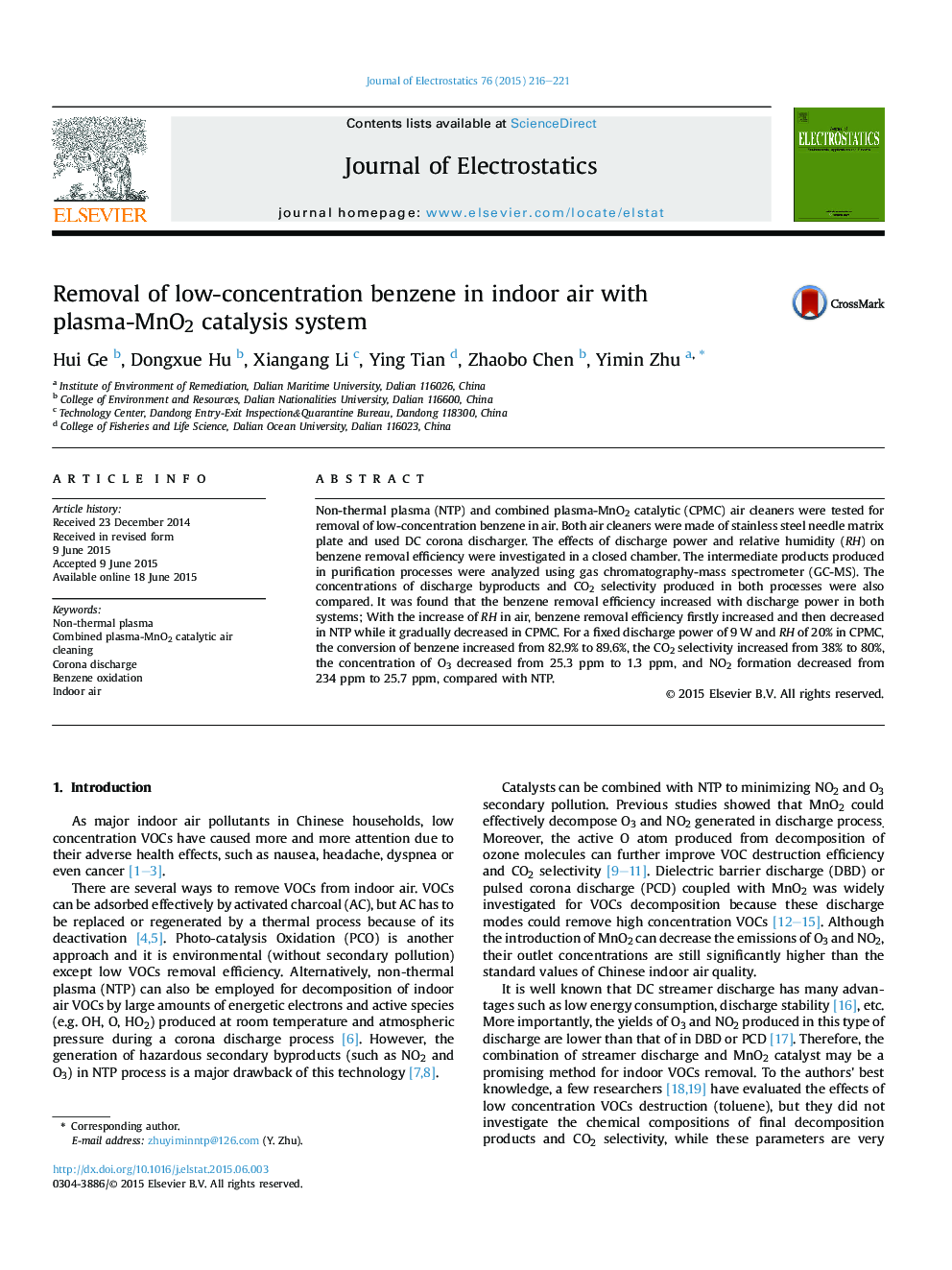| Article ID | Journal | Published Year | Pages | File Type |
|---|---|---|---|---|
| 724231 | Journal of Electrostatics | 2015 | 6 Pages |
•Benzene removal in indoor air by streamer discharge coupled with MnO2 was tested.•MnO2 obviously improves CO2 selectivity and decreases byproduct production.•VOC concentration and applied energy density are key factors effecting EY.•ppb level C6H6 decomposition can be realized by CPMC although energy yield is poor.
Non-thermal plasma (NTP) and combined plasma-MnO2 catalytic (CPMC) air cleaners were tested for removal of low-concentration benzene in air. Both air cleaners were made of stainless steel needle matrix plate and used DC corona discharger. The effects of discharge power and relative humidity (RH) on benzene removal efficiency were investigated in a closed chamber. The intermediate products produced in purification processes were analyzed using gas chromatography-mass spectrometer (GC-MS). The concentrations of discharge byproducts and CO2 selectivity produced in both processes were also compared. It was found that the benzene removal efficiency increased with discharge power in both systems; With the increase of RH in air, benzene removal efficiency firstly increased and then decreased in NTP while it gradually decreased in CPMC. For a fixed discharge power of 9 W and RH of 20% in CPMC, the conversion of benzene increased from 82.9% to 89.6%, the CO2 selectivity increased from 38% to 80%, the concentration of O3 decreased from 25.3 ppm to 1.3 ppm, and NO2 formation decreased from 234 ppm to 25.7 ppm, compared with NTP.
